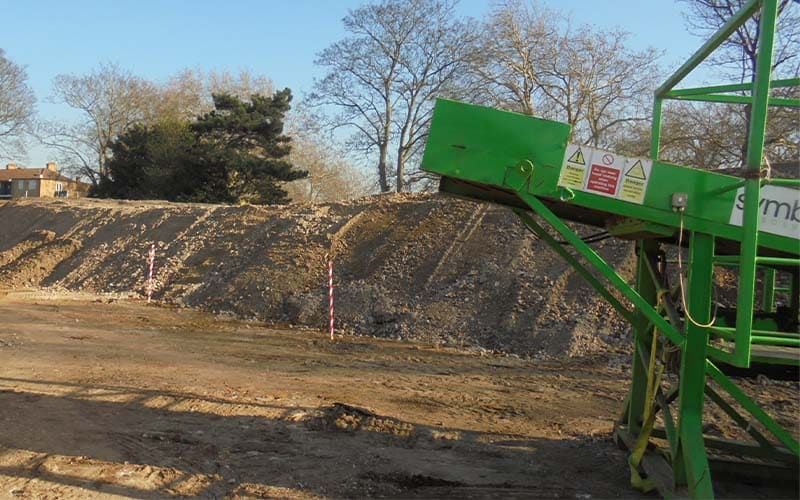Development site case study
Here's a case study of the project and how we managed the situation that resulted in a positive outcome for all.

It is difficult to control and a challenge to kill, so if Japanese knotweed is found on a construction site, it's bad news for property developers. In recent years it has become more and more of an issue as the presence of this invasive plant delays projects which causes a whole range of problems for building developers across the length and breadth of the U.K.
Additional contaminants found on-site
The site in Lincoln was destined to be a brand-new science park, however, development work was not only held up by the presence of the dreaded knotweed but a recent contamination report also uncovered other contaminants, namely hydrocarbons.
Having hydrocarbons present in the soil would mean that the soil would need to be disposed of as hazardous waste at a registered landfill site. An even bigger issue was that not all landfills accept hazardous waste, so disposing of the soil at this site was starting to look very costly!
Delays impact negatively on the project
On surveying the entire site, Japanese knotweed was found growing close to a public footpath, near to services that could be at risk from the aggressive plant. Due to the infestation, development could not go ahead until a specialist knotweed removal company, were able to ascertain the situation and decide upon the best form of eradication of the invasive plant. Causing the companies involved not only frustration at a delay in construction, but also affecting timelines, work schedules and obviously resulting in a negative financial impact on the development project.
With a short deadline and eradication challenges, TCM got to work.
The main issues:
The infestation was causing these developers three major problems:
- Costly waste disposal
- Risk of re-encroachment from knotweed present in the public footpath
- Loss of time
So, our professional eradication team came up with a solid plan, a treatment solution that would eradicate the knotweed fast and save the company money.
TCM commercial treatment plan
TCM set to work on this commercial treatment solution which involved excavating the Japanese knotweed - not an easy job when the rhizome can be buried up to 3 metres underground! The dig and dump method was the most appropriate removal solution for this particular site due to the presence of both Japanese knotweed and the hydrocarbons.
Excavation wasn't wholly possible around the public footpath, therefore TCM installed a root barrier along the site boundary. Up to 1.9 metres deep, the membrane would protect the site from encroaching knotweed and keep the infestation at bay.
Effective results, happy clients
Despite several challenges, TCM completed the Japanese knotweed eradication plan within 2 weeks. With a representative for the company stating:
"We're happy the job was done efficiently and effectively. Nowadays, Japanese knotweed is more of a problem than Asbestos!"
With the success of the knotweed removal treatment, the development project was then able to continue and get back on track.
If Japanese knotweed is currently delaying your development plans then contact our experienced team here at TCM. We can discuss your project and work out the best plan of action to get the wheels turning again.